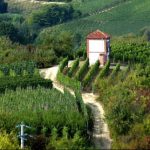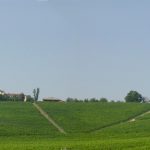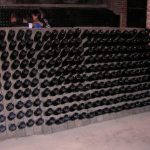
Name
Roero Arneis
Seal of quality
Guarantee of Origin and Protected Designation of Origin.
A.O.C. – D.P.R. 18th April 1985
A.O.C.G. – D.M. 23th March 2006
Description
On the dry sandstone soils of the Roero, soft and permeable round conditions where the sandy layers are interspaced with slim strips of Marne , the Arneis grapes acquire a delicate bouquet that is reminiscent of white flowers with fresh fruity hints ranging from apple to peach and hazel-nuts. With its brilliant yellow colour and greenish hue, it is wonderfully dry and delicate acid on the palate with a pleasant slightly bitter aftertaste.
These Arneis grapes are used to make wine with a minimum alcohol content of 11°. As well as the traditional wine making process it is also possible to produce sparkling Roero Arneis Spumante: which features a wonderfully persistent foam with pleasant hints of yeast, crusty bread and vanilla.
Area of production
The area of production is the geographical area of Roero situated on the left of the river Tanaro, and involves the entire administrative region of the communes: Canale, Corneliano d’Alba, Piobesi d’Alba, Vezza d’Alba and a part of the communes: Baldissero d’Alba, Castagnito, Castellinaldo, Govone, Guarene, Magliano Alfieri, Montà, Montaldo Roero, Monteu Roero, Monticello d’Alba, Pocapaglia, Priocca, S. Vittoria d’Alba, S. Stefano Roero, Sommariva Perno on the left of the Tanaro.
History
This white wine that originates from the grapes of an ancient vine stock which comes under the Latin name of “Renexium” in the vine growing zones of Piedmont, has in the recent years experienced a unique wine growing renaissance in the Roero vine growing zones, the hilly zone located to the left of the Tanaro river.
It has been cited since the late 1400’s in various documents which refer to this zone, which has been the site of various wine making experiments, with the first production of vermouth in the late 1700’s and the 1800s it being considered as one of the best vine stock, so that the wine produced was often specifically cited as being “Arneis white” while the rest came under the title of “white wine made from various grape varieties”.
According to the customs of the time, it probably began as a sweet wine, but the cellar stocks, became equivalent, if not superior to that of Nebbiolo.
In fact right from the early 1900’s it was often classified as a white Nebbiolo and its image was strongly and exclusively linked to the Roero.
It was subsequently seriously affected by a wine making recession, which saw the widespread abandonment of the countryside in the period between the two world wars, so that by the late 1960’s the area available was reduced to only a few kilometres of plantations, consisting of rows of vines which were dotted amongst those of Nebbiolo, mainly around the edges of the vineyards in order to keep birds away from the black grapes, which were the most profitable with its ultra-sweet grapes and early ripening feature.
It was thanks to the far sighted business intuition of certain wine producers that it was decided to establish a fine white wine in a land which was previously considered as being suitable only for red wines, and thereby restore prestige and high profile to both a wine and its land of origin the Roero.
With the growth in popularity of white wines in the past decades, it soon became the most fashionable white wine of Piedmont , thereby helping to give a new breath of life to both the plantations and the production. It prefers simple and elegant dishes, such as fish naturally, especially lake and river varieties, as well as white meat, vegetable and delicate pasta and rice based dishes. As currants, with their delicious aroma of honey and dried fruit, it used to enhance the flavour of certain sweets and puddings.
The current Consortium for the Protection of Barolo, Barbaresco, Alba Langhe and Roero, was set up in 1994 and soon became a true reference point for the wine production companies in the area between the Langa and Roero, which has used this body as an important instrument for tackling the problems linked to the development and organization of the wine making activities and of the wine production sector as a whole.




